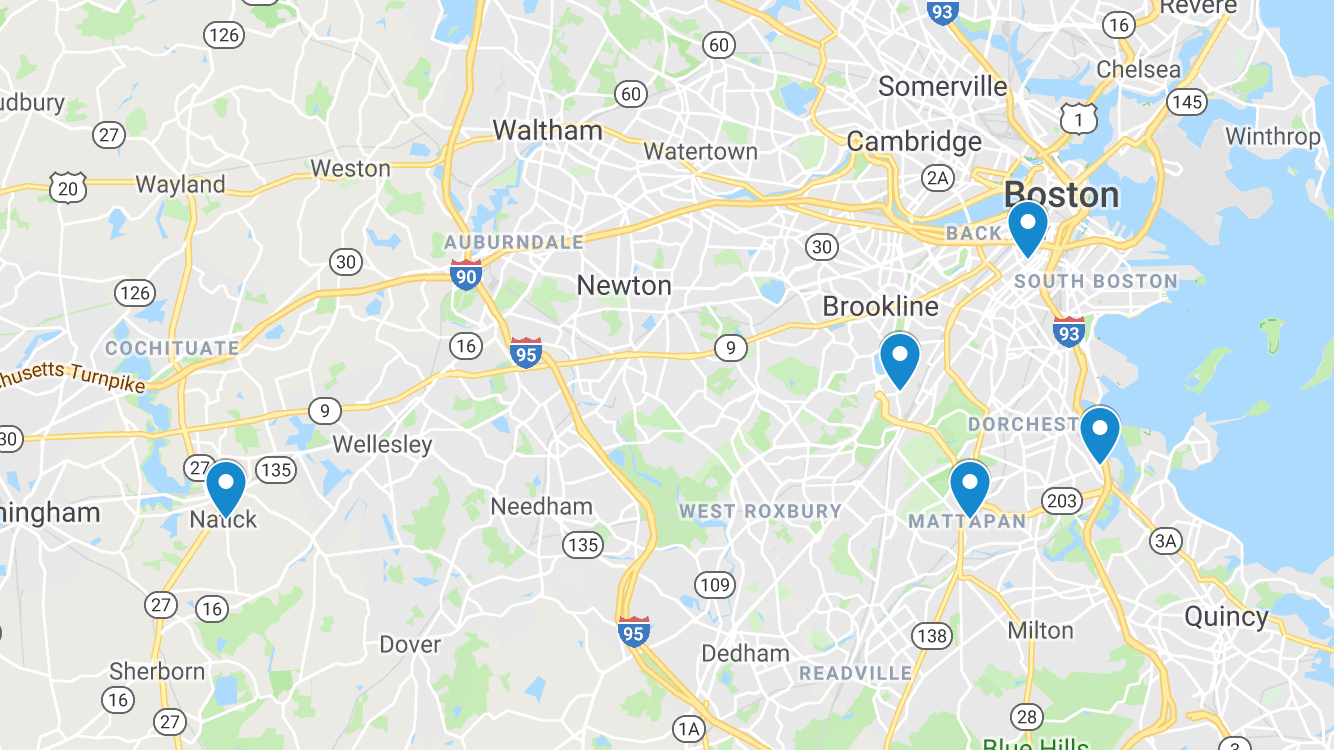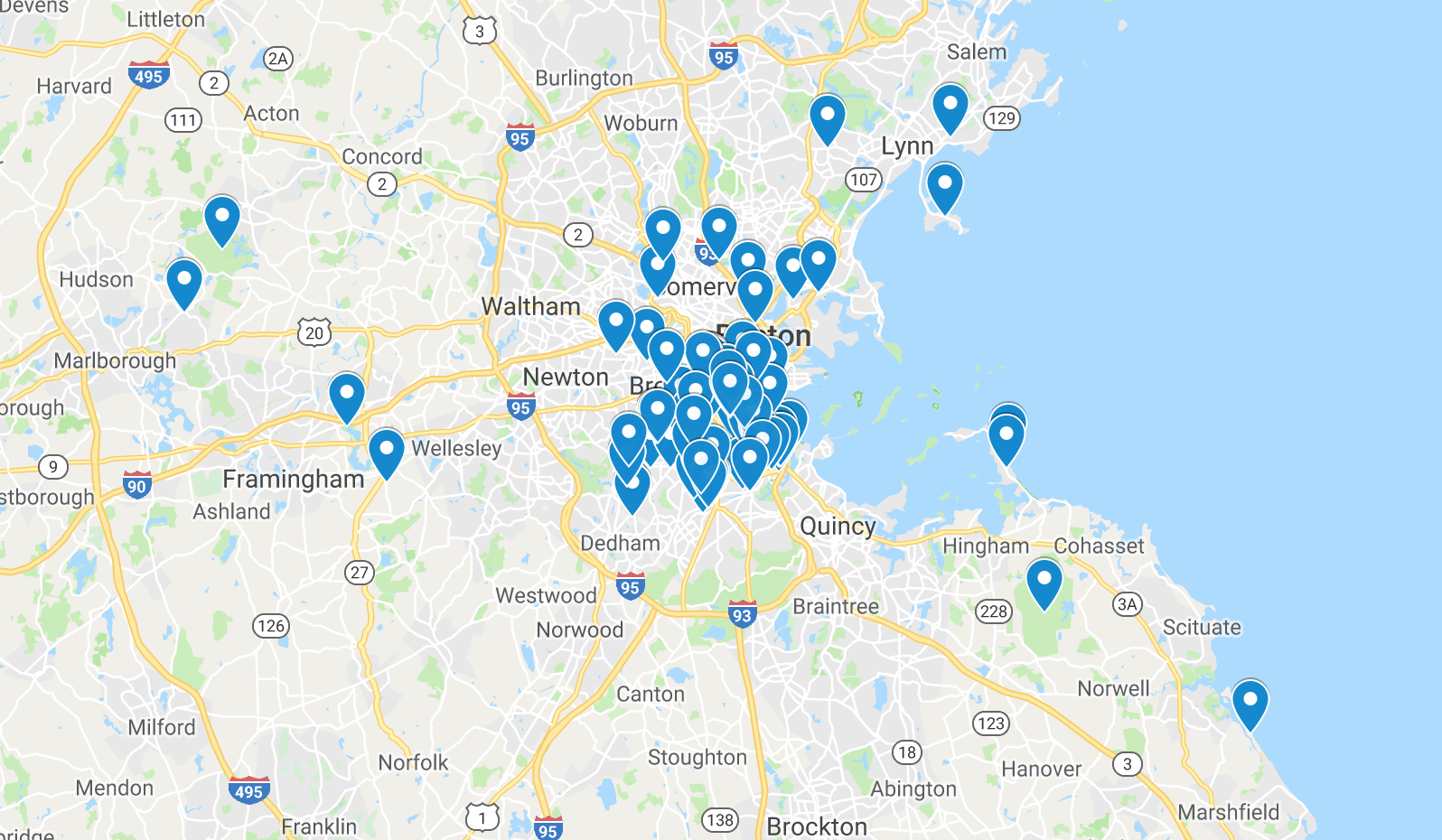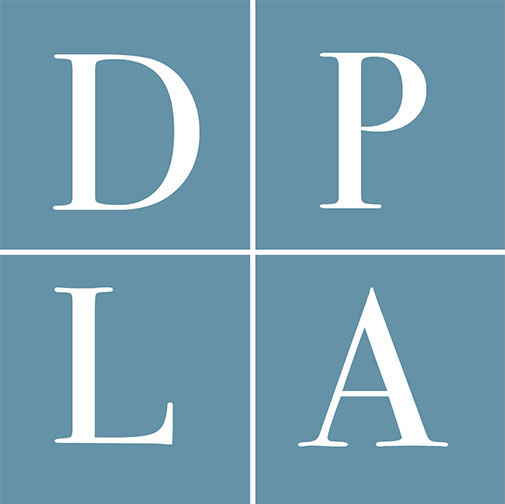Native American Names in the Greater Boston Area
When we think of Boston's history, we tend to start with the Puritans settling the area, the Boston Tea Party, and anything else succeeding the Colonial Era. However, Boston's history started thousands of years before any settlers arrived, with the Native Americans who lived off the land at least 12,000 years ago. These people all belonged to Algonquian tribes, meaning they spoke Algonquian languages, a set of the most prolifically used language groups of North American Native Americans. They often lived in wigwams or longhouses, and many tribes were fairly nomadic. A few of the more populous tribes of the Greater Boston Area were the Massachusett, the Pawtucket, and the Pokantoket. Settlers from Europe almost completely eradicated the Native American populations, particularly in New England. Disease they brought overseas led to fatal plagues among the Native Americans, they constantly moved them to new settlements further and further away, attempted to force them to convert to Christianity, and even engaged in a small war (King Philip's War) with them. Native American populations quickly dwindled to the current 0.1% of Massachusetts population and 0.0% of Boston population.
Despite these depressing statistics, some remnants of Greater Boston Area Native American history still remain in surprising places - the names of our towns and natural landmarks. Even the state name "Massachusetts" is derived from the Massachusett tribe. In this post, I will explore some the names of places in the Greater Boston area that hold memories of Native American past. Do towns put in the effort to remember the people they are named after? How do they preserve Native American history?
Introduction
As you can see, there are many sites in the Greater Boston Area with Native American names. I mostly focused on street names in Boston; I went through a directory of all Boston street names and tried to pick out as many Native American names as possible. I found 78 streets in Boston with Native American-related names. I did this to show that there are many more places in the Greater Boston Area that still carry Native American names than the ones I chose to display, and that their history lives on in many ways. Many of these streets I'm sure you will be surprised to find carry Native American heritage, such as Crispus Attucks Street. Crispus Attucks was the first person killed in the Boston Massacre, and was of African and Native American descent. To look at the maps with more detail and to see the full list of names, follow the links under the pictures. Below, I will go into more detail about the five sites shown on the first map.
Natick, MA
The name Natick means "Place of Searching" in the Massachusett-Natick language. in In 1651, Natick, MA, was deemed the first "praying Indian town." Praying Indian towns were created by Puritan settlers to convert Native Americans to Christianity, and the people who were moved to these towns were referred to as "Praying Indians." John Eliot moved Massachusett people in the area into Natick, where they were allowed to govern themselves but were also forced to follow rules that enforced English Puritan culture. The first Bible to ever be printed in the Americas would be in the Massachusett-Natick language, a result of a great feat of translation by Eliot and several of the Massachusett people. In 1675, the people of Natick were moved to Deer Island in Boston Harbor, where they were confined and not allowed to hunt game or light fires, resulting in the death of most of the Praying Indians. When the remaining few eventually returned to Natick, they slowly sold off their property to settlers until almost all were gone by 1785.
How is Natick's Native American history remembered today? The descendants of the Natick Praying Indians actually still maintain a small community, with a chief descended from Waban, the original chief of Natick. The cornerstones of their community are the site of the original Indian Church (now Eliot Church of South Natick), Peletiah's Tavern, Native American burial grounds within Natick, and Lake Cochituate. Eliot Church is a community church open to all Christian religions, but the Natick Tribe still expresses a desire to reclaim the church for themselves on their website, and the Natick Praying Indians held their first public service in 300 years in 2012. Every year, they also hold a powwow at Cochituate State Park in Natick to celebrate their heritage.
The Natick Historical Society is built partially on the burial grounds of the Praying Indians, and had some of the contents of items found in these graves on display until they were repatriated in accordance with the Native American Graves Protection and Repatriation Act. It still contains information about the Native Americans that lived in the town and several artifacts found in the area.

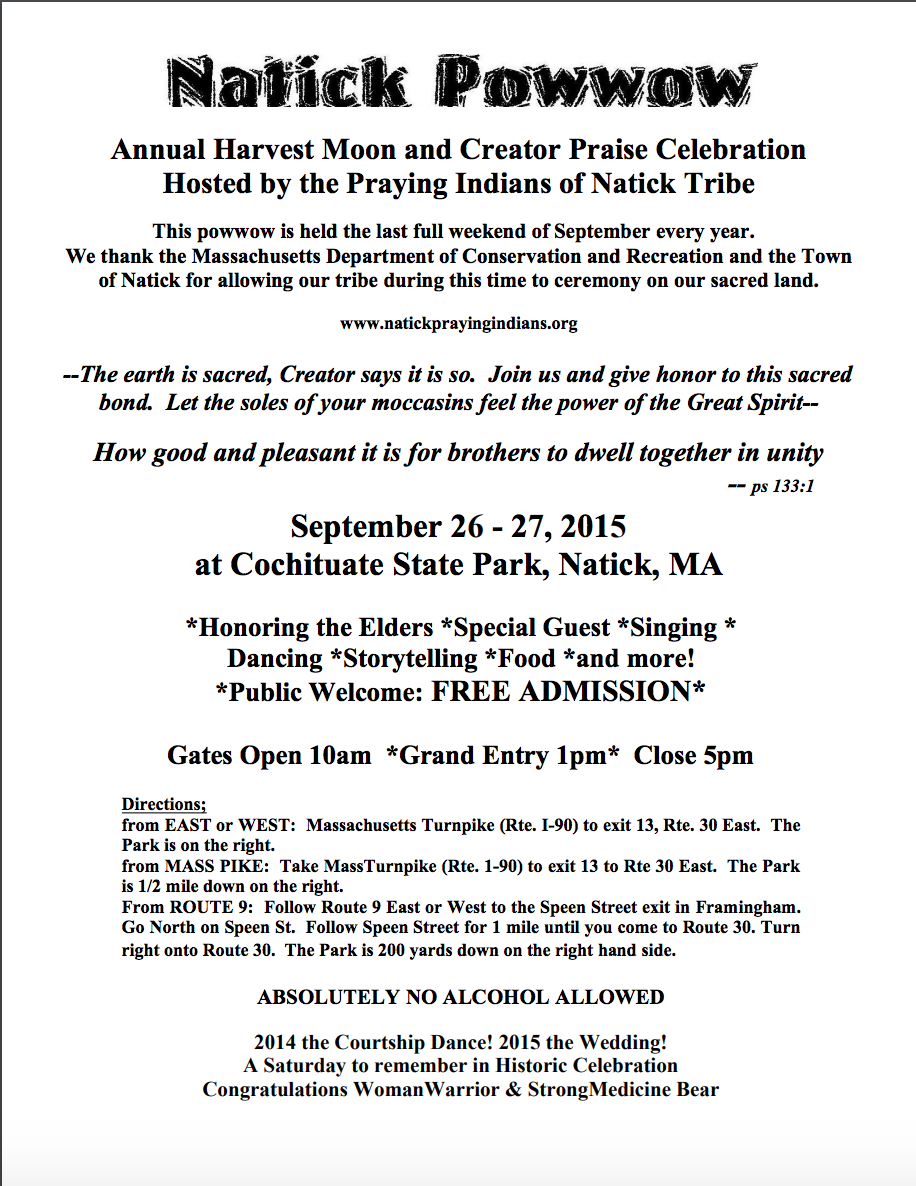
Jamaica Plain, Boston, MA
Jamaica Plain is an interesting case because its name is supposedly an Anglicization of the leader of a Massachusett tribe that resided there, Kuchamakin, or Big Feather. Kuchamakin at first resisted John Eliot's initial efforts to convert his tribe, but eventually swore allegiance to King James I. For a long time, it was believed no Native Americans ever resided in Jamaica Plain, as the result of an erroneous statement in Francis Drake's History of Roxbury. Native American artifacts were found in the Arboretum as well as colonial documents referencing native tribes, disproving this claim.
The items found in the Arboretum were catalogued at Harvard's Peabody Museum and then returned to the Arboretum's Visitor Center. They were found at the tops of hills and by a river, common choices for sites for the protection of height and the accessibility of water from the river. Oregon Trail was written by a Jamaica Plain resident, Francis Parkman, who sought out Sioux Indians in the west, who also fall under the umbrella of Algonquin-speaking Native Americans. His house in Beacon Hill is preserved today with a statue of an Iriquois in front of it.
All of this information can be found on the Jamaica Plain Historical Society website - the organization has no physical building, but conducts walking tours and other events.
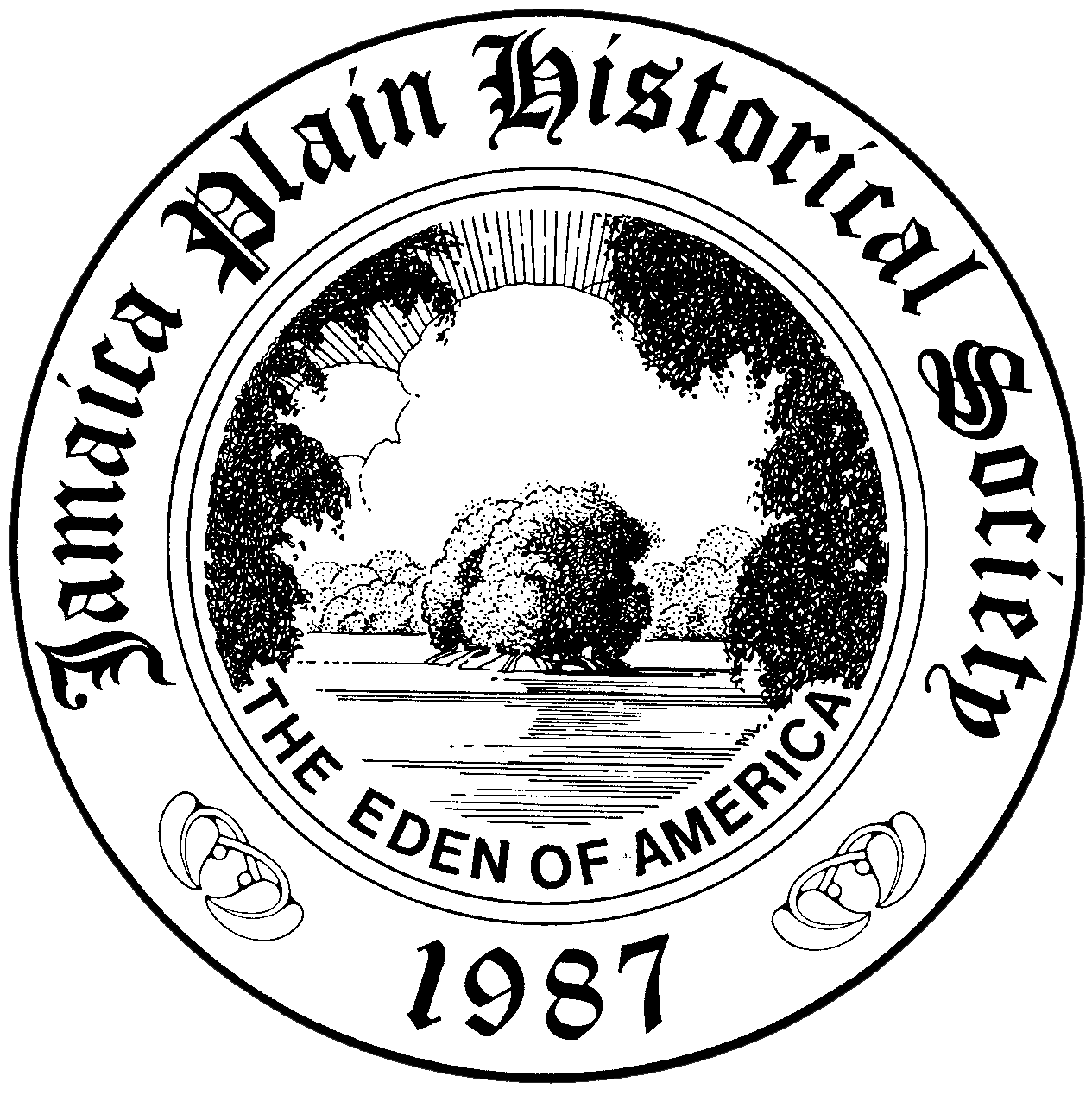
Mattapan and Neponset, Boston, MA
Mattapan means "a good place to be" or "a good place to sit," and was named by the Neponsett tribe. It might have been called this because the Neponset River runs through the area, providing plenty of water and natural resources. The Neponsetts used the river to bring skins to Thompson's Island to trade with Puritan settlers.
Mattapan does not have its own historical society, but a pair of statues depicting Massachusett tribe members stand at Blue Hill Avenue (recall that Massachusett "means near the great hill," or "by the blue hills"). Even without a historical society, there are some ways to see the mark that Native Americans have left on Mattapan.
Neponset, meaning "there, there is that place" or "there, where there is the crossing," was named after the Neponsett tribe, and probably refers to the lower falls of Dorchester. These falls were used for wading or fording, and "pon" means a fording or wading place. There is less information available about Neponset's preservation of its Native American history online.
Shawmut Peninsula, Boston, MA
Shawmut Peninsula is the piece of land upon which Boston is built. No one is quite sure what Shawmut means, as it is probably an extreme anglicization of a Native American word. Some possible interpretations are "a fountain of living waters," "where there was going by boat," or simply "peninsula."
Boston remembers Native American history in many ways. There is the North American Indian Center of Boston, which has the mission of "empower(ing) the Native American community with the goal of improving the quality of life of indigenous peoples." It puts on cultural events throughout the year and offers educational support, occupational training, a summer program for children, and more. The Native American Trail Project links several memorials, monuments, landmarks, and historic markers related to Native Americans in a walking trail throughout Boston. Once a year the Cultural Survival Bazaar celebrates Native American culture and history through a marketplace on Boylston Street. Several museums, such as the Museum of Fine Arts and the Boston Children's Museum, have exhibits concerning Native American history.
There are also a few Native American Reservations in Massachusetts. Here are links with more information about them:
Conclusion
While the Native American population of Massachusetts and the rest of the US is a fraction of what it was before colonization, there are many ways to trace their history all around us. I hope by compiling the names and history of places that were once home to Native American tribes, I encourage readers to be more aware of the past that still lives among us. I wasn't able to find any other websites that gathered Native American named sites of the Greater Boston Area, so I also hope that this post helps to fill that archival silence. Street and town names all around us carry the memory of Native Americans past, and we should maintain awareness of this continuing history.
There are still many Native Americans today that work incredibly hard to preserve their culture, living on reservations or in our communities. The Natick Praying Indians are a great example of a community of Native Americans working to preserve their culture, as they put on yearly powwows and strive to reclaim the church that started their religion. There are still many thriving Native American cultures, so it is important to remember that they are not simply a thing of the past.
Sources
A History of the Neponset River, neponsetgreenway.com/nephist.htm.
Natick Praying Indians, natickprayingindians.org/wigwam.html.
The Pluralism Project, pluralism.org/timeline/native-peoples-in-boston/.
“Boston's Best Ways To Celebrate Native American History And Culture.” CBS Boston, CBS Boston, 12 Nov. 2012, boston.cbslocal.com/top-lists/bostons-best-ways-to-celebrate-native-american-history-and-culture/.
“Chaubunagungamaug Reservation.” Academic Dictionaries and Encyclopedias, enacademic.com/dic.nsf/enwiki/4516304.
“Hassanamisco Reservation -- National American Indian and Alaska Native Heritage Month-- National Register of Historic Places Official Website--Part of the National Park Service.” National Parks Service, U.S. Department of the Interior, www.nps.gov/nr/feature/indian/2011/hassanamisco_reservation.htm.
“Mashpee Wampanoag Tribe.” Mashpee Wampanoag Tribe, mashpeewampanoagtribe-nsn.gov/.
“Mattapan Facts.” MyMattapan.org, mymattapan.org/MattapanFacts.
“NAICOB.” NAICOB, www.naicob.org/.
“Natick Praying Indians.” Natick Praying Indians, natickprayingindians.org/.
“Native Americans in Jamaica Plain.” Jamaica Plain Historical Society, www.jphs.org/colonial-era/native-americans-in-jamaica-plain.html.
News, Brian Benson/Daily. “Natick Praying Indians Hold Historic Service at Eliot Church.” MetroWest Daily News, Framingham, MA, MetroWest Daily News, Framingham, MA, 12 Aug. 2012, www.metrowestdailynews.com/x521655906/Natick-Praying-Indians-hold-historic-service-at-Eliot-Church.
“The History of the Arms and Great Seal of the Commonwealth of Massachusetts.” Elections: 2018 Ballot Questions, www.sec.state.ma.us/pre/presea/sealhis.htm.
“The Indian Names of Boston, and Their Meaning : Horsford, Eben Norton, 1818-1893 : Free Download, Borrow, and Streaming.” Full Text of "Passing", London : F. Warne ; New York : Scribner, Welford, and Armstrong, 1 Jan. 1886, archive.org/details/cu31924104089440/page/n39.
Tribe, Wampanoag. Wampanoag Tribe - History & Culture, www.wampanoagtribe.net/Pages/index.
“U.S. Census Bureau QuickFacts: Massachusetts; UNITED STATES.” Census Bureau QuickFacts, United States Census Bureau, www.census.gov/quickfacts/fact/table/ma,US/RHI525217#RHI525217.
